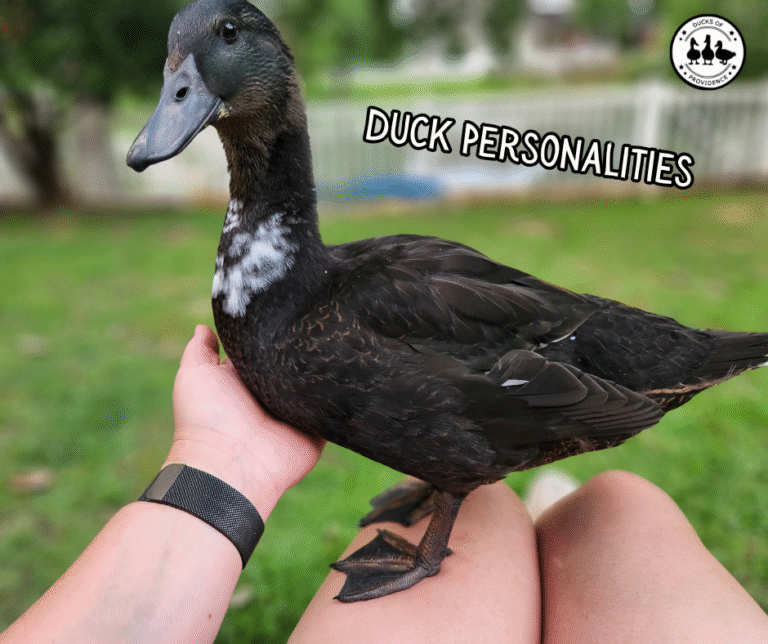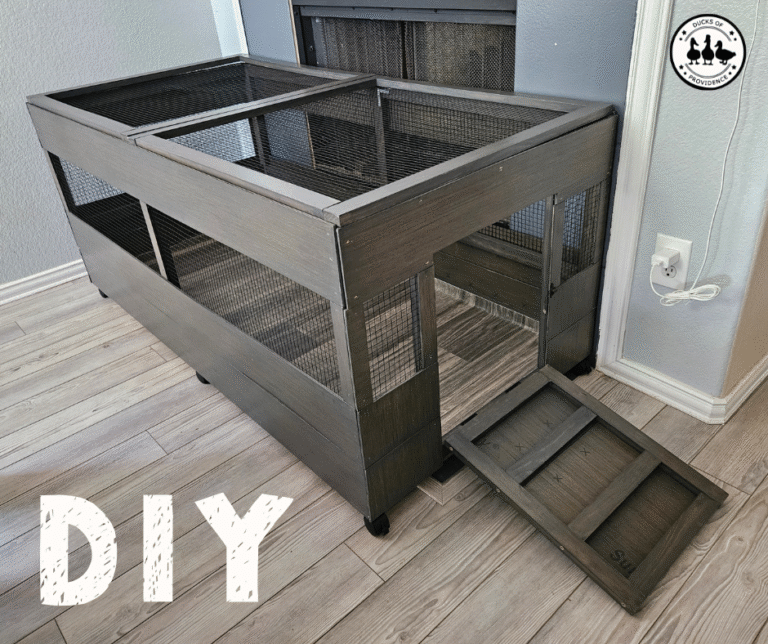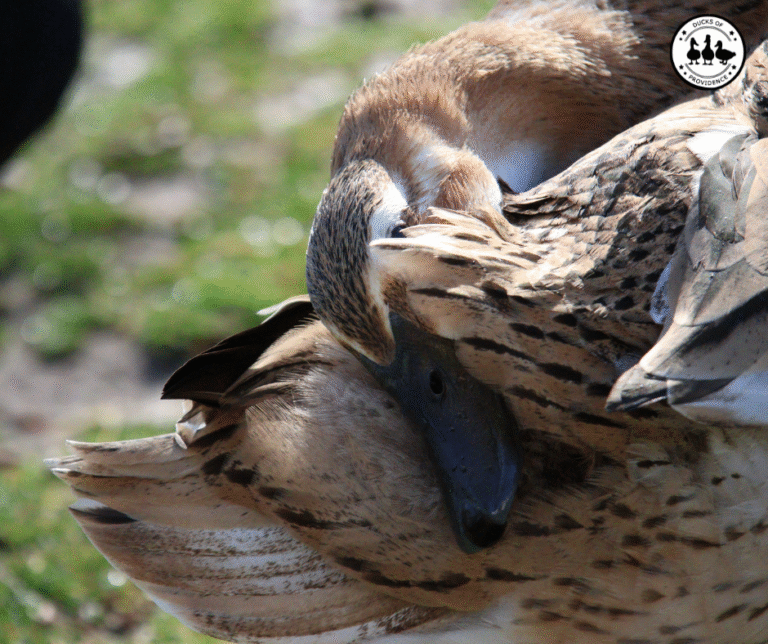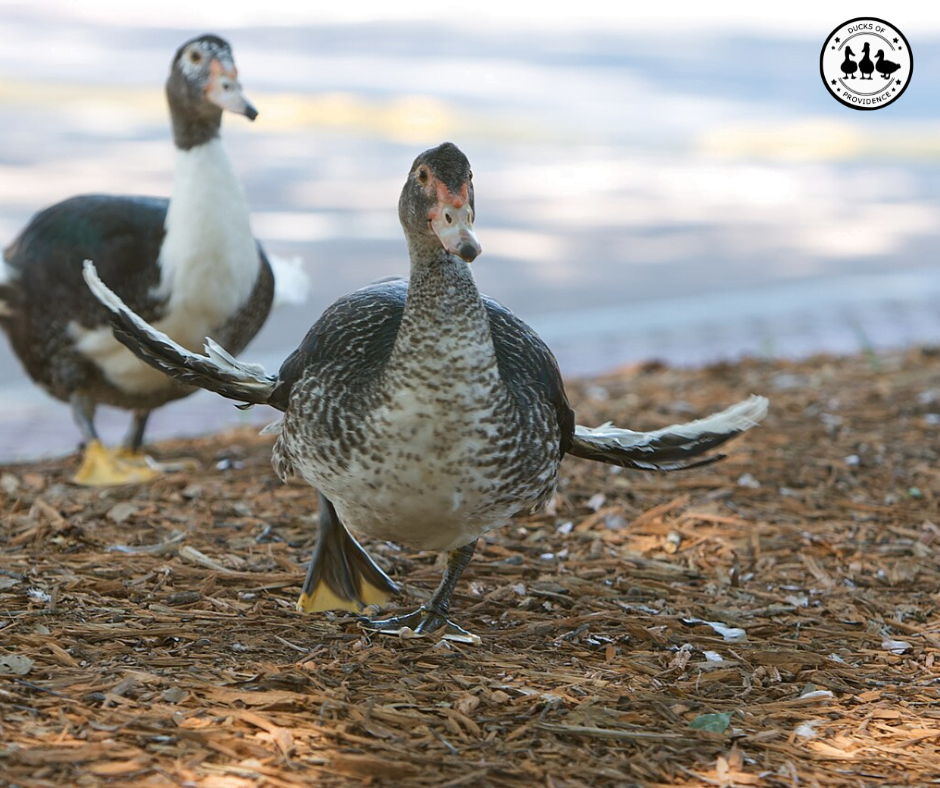
Angel Wing in Ducks (Causes, Treatments, and More)
Last updated on July 16th, 2024 at 06:14 pm
Angel wing, also known as airplane wing or slipped wing, is a condition that can affect ducks, particularly waterfowl raised in captivity. This condition causes the last joint of the wing to twist outward instead of lying flat against the body, giving the appearance of an airplane wing in flight. It’s not life-threatening, but it can affect the bird’s ability to fly and lead to discomfort.
This article is part of our Duck Health Conditions Series.
Let’s discover everything you need to know about angel wing in ducks.
Disclaimer: I may earn a commission if you buy products or services through my affiliate links. This will not affect the price you pay. I only recommend products or services that I believe will be beneficial to my readers.
What is Angel Wing in Ducks
Angel wing is a condition found in various bird species, characterized by an outward twisting along the wrist joint of one or both wings. It is observed in waterfowl like geese, swans, ducks, pelicans, and cormorants, as well as in other birds such as commercial chickens, masked boobies, Accipiter gentilis, and Grus Americana. [1]
Other names for angel wing are Slipped Wing, Crooked Wing, Drooped Wing, Airplane Wing, Carpal Deformity, Valgus Carpal Deformity, Dropped Wing, Flip Wing, Straw Wing, Spear Wing, Tilt Wing, and Rotating Wing.
Angel wing, a common condition in domesticated ducks, manifests as the last joint of the wing twisting outward instead of lying flat against the body. This gives the appearance of an airplane wing in flight. Though not life-threatening, it can hinder flight and cause discomfort. Angel wing typically arises from dietary imbalances, particularly excess protein and calories during rapid growth.
When corrected during the duck’s growth stage, angel wing is typically easily treatable. However, if treatment is postponed or the condition goes unnoticed until the duck reaches maturity, the deformity becomes permanent. Ducks are particularly susceptible to developing angel wing between 8 to 12 weeks of age. [2]
![A Muscovy Duck with Angel Wing from [2] CC BY-SA 3.0](https://ducksofprovidence.com/wp-content/uploads/2024/05/Angelwing3-CC-Wikipedia-1024x682.jpg)
What Does Angel Wing Look Like in Ducks
Recognizing angel wing is essential for giving our ducks the care they need. Let’s take a closer look at how this condition shows up in our feathered friends.
When a duck has an angel wing, its wing doesn’t sit right against its body like it should. Instead, the last part of its wing sticks out to the side, making it look like an airplane wing. You might notice that the feathers on the affected wing stick out differently from those on the other wing.
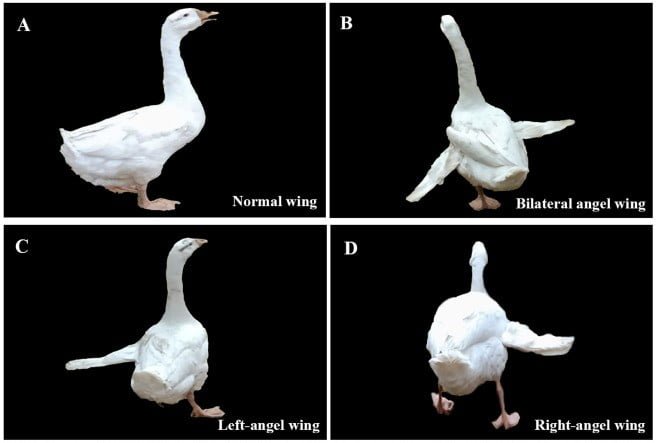
Sometimes, you can see the wing joint sticking out or twisting, which can look odd compared to the other side. It’s kind of like if one of your arms suddenly decided to stick out sideways instead of resting comfortably by your side.
Another thing to watch is if your duck has trouble flying or flapping their wings normally. If they seem to struggle or if their flying isn’t as smooth as usual, it could be a sign that something’s not right with their wings.

By watching for these signs and knowing what to look for, we can catch angel wings early and give our ducks the help they need to stay happy and healthy.
Angel Wing Only Left-Sided
In the world of angel wing, a common trend appears: if only one wing is affected, it is usually the left one. This section looks into potential reasons why this happens, giving us a better understanding of how this condition shows up in our favorite waterfowl friends.
Anatomical Considerations: It’s not uncommon to find that the left wing is more frequently affected by angel wing than its right-wing counterpart. This asymmetry may stem from the anatomical differences between the two wings and the positioning of vital organs within the duck’s body cavity.
The left wing’s proximity to the heart and liver may subject it to slightly different biomechanical forces during development, potentially predisposing it to the aberrant growth patterns characteristic of angel wing.
Environmental Influences: Environmental factors such as handling practices and environmental stressors may contribute to this left-wing bias. Ducks, like many animals, exhibit lateralized behaviors, meaning they prefer using one side of their body over the other.
For example, handling techniques that favor the right hand may inadvertently place greater stress on the left wing during critical developmental stages, exacerbating the risk of angel wing.
Implications for Care: While the left-wing predisposition in angel wing presents a curious phenomenon, it underscores the importance of considering biological and environmental factors in understanding and addressing this condition.
By recognizing these nuances, caretakers can tailor their approach to prevention and management, promoting their avian companions’ optimal health and welfare.
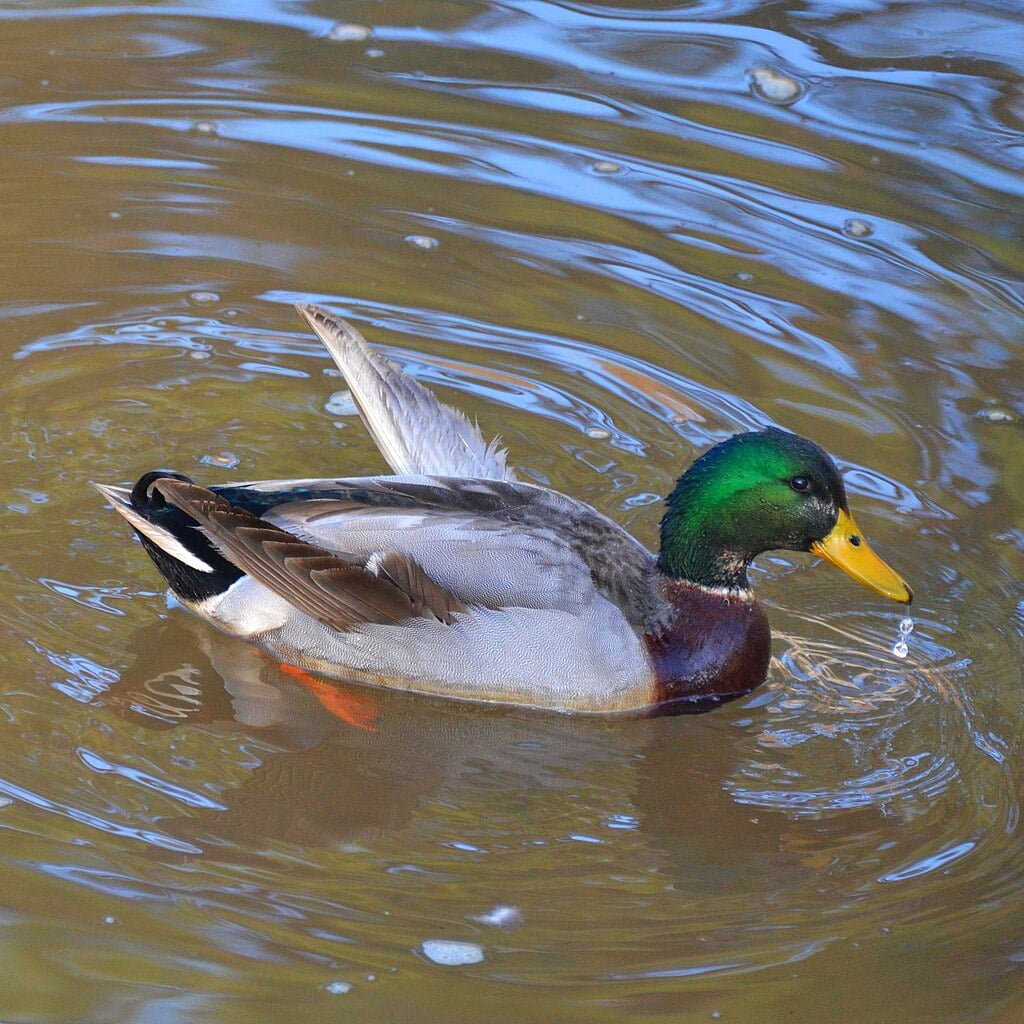
What Causes Angel Wing in Ducks
Understanding the intricate factors contributing to angel wing empowers caretakers to proactively address this condition in their feathered companions. This chapter delves into the multifaceted causes of angel wing, exploring the complexities of this prevalent issue.
The causes of angel wing can vary. In waterfowl, it’s believed that excessive growth of the primary feathers puts increased pressure on the muscles, ligaments, and bones around the wrist joint, leading to outward twisting of the forewings. This can be associated with malformation of the distal carpal bones. Malnutrition may also contribute, with factors such as high-protein diets, malnutrition, or inadequate intake of calcium and phosphorus being linked to angel wing. [1]
Additionally, certain dietary components like T-2 toxin and antioxidants have been associated with increased incidence and severity of angel wing in White Roman geese. Genetic factors are also implicated, with studies suggesting that inheritance may involve multiple pairs of genes and that genetic selection for the angel wing phenotype can worsen its occurrence. [1]
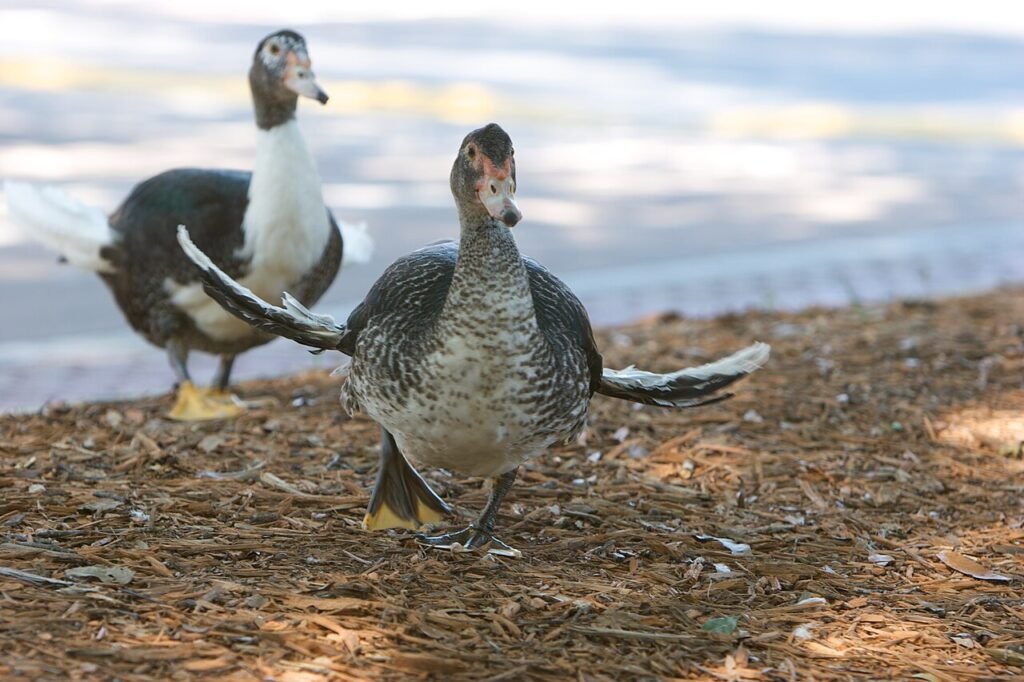
1. Dietary Imbalances:
Angel wing often arises from imbalances in the duckling’s diet, particularly during their rapid growth phase. Excessive intake of protein and calories, commonly associated with high-protein diets or overfeeding, can disrupt the delicate balance of nutrients required for healthy wing development.
A research study on greater sandhill cranes (Grus Canadensis tabida) revealed that feeding them high-protein diets (32% protein) led to a wing deformity rate of 25% during the rapid growth phase (7 to 28 days after hatching). Conversely, feeding them a diet with 24% protein and low levels (0.73%) of amino acids containing sulfur slowed crane growth sufficiently to reduce the occurrence of limb deformities. [6]
2. Environmental Influences:
The duck’s living environment plays a crucial role in the development of angel wing. Confinement in small spaces with limited opportunities for exercise and natural foraging can exacerbate the risk of this condition. Inadequate space and lack of physical activity hinder the duckling’s ability to engage in natural wing-stretching behaviors, further complicating wing development.
3. Genetic Predisposition:
While the precise genetic mechanisms underlying angel wing susceptibility remain under study, certain duck breeds or individuals may exhibit a predisposition to this condition. Breeders and caretakers should be mindful of selecting and breeding ducks with robust genetics and optimal growth traits to minimize the risk of angel wing.
4. Rapid Growth Rates:
Ducks experiencing rapid growth rates are particularly susceptible to angel wing. The accelerated development of bones and muscles during this period can increase the likelihood of abnormal wing growth, especially when coupled with dietary imbalances and environmental stressors.
5. Incubation Conditions:
Improper incubation conditions, such as fluctuations in temperature or humidity, may contribute to the development of angel wing. Suboptimal conditions during the embryonic stage can impact the duckling’s development, potentially leading to wing abnormalities later in life.
6. Metabolic Disorders:
Underlying metabolic disorders or abnormalities may also predispose ducks to angel wing. Conditions affecting nutrient absorption or utilization can disrupt the body’s ability to properly regulate growth and development, increasing the risk of musculoskeletal abnormalities like angel wing.
By exploring these interconnected factors, caretakers can gain a comprehensive understanding of angel wing’s etiology and implement targeted interventions to mitigate its impact on their flock. Through proactive management practices and informed decision-making, we can work toward promoting the optimal health and welfare of our beloved feathered companions.
How to Fix Angel Wing in Ducks
If angel wing is addressed early in the duck’s growth phase, it can often be corrected by applying a splint or using VetWrap to immobilize the wing in the correct position, along with dietary adjustments.
Treatment involves wrapping the affected wing(s) in a figure-eight pattern using VetWrap as soon as angel wing is suspected. It’s important to check the wrap daily to ensure it remains secure.
Most ducks should start showing improvement within a week. At the same time, dietary changes are recommended. Ducks should transition to a lower protein diet with crude protein levels not exceeding 16%.
1. Dietary Modifications:
The cornerstone of angel wing correction lies in dietary adjustments tailored to the duckling’s nutritional needs. Transitioning to a balanced diet that moderates protein intake while providing essential nutrients fosters optimal growth and development.
Ensure protein level is no greater than 16% at the maximum and do not feed high carbohydrate food items like bread.
Careful selection of commercial waterfowl feed and supplementation with greens and vegetables form the foundation of a nutrient-rich diet conducive to wing rehabilitation.
2. Physical Therapy:
Supplementing dietary modifications with targeted physical therapy promotes muscle tone and flexibility, facilitating the gradual realignment of the misdirected wing. Controlled exercises such as wing stretching and fluttering encourage natural movement patterns, aiding in restoring wing function.
Providing ample space for free-ranging activities further supports the duckling’s rehabilitation journey, fostering natural movement and development.
3. Veterinary Consultation:
In cases where dietary adjustments and physical therapy yield insufficient results, seeking professional veterinary guidance is paramount. Experienced avian veterinarians proficient in waterfowl medicine can offer tailored treatment plans, including nutritional counseling and orthopedic interventions.
Collaborating with veterinary experts ensures comprehensive care and optimized outcomes for ducks affected by angel wing.
4. Patience and Monitoring:
Navigating the path to angel wing correction requires patience and perseverance. Progress may unfold gradually, with improvements observed over time as the duckling’s wings develop and strengthen. Regular monitoring of the duck’s condition and adjustments to the treatment plan as needed facilitates ongoing support. It ensures the best possible outcome for their long-term health and well-being.
5. Supportive Environment:
Creating a supportive environment conducive to healing is essential for facilitating angel wing correction. Providing ample space for movement and natural behaviors and minimizing environmental stressors fosters a conducive atmosphere for rehabilitation. By fostering a nurturing environment, caretakers empower ducks to embark on their journey toward winged redemption with confidence and resilience.
By embracing these multifaceted interventions with dedication and care, caretakers can navigate the path to angel wing correction, fostering optimal health and well-being for their cherished feathered companions.
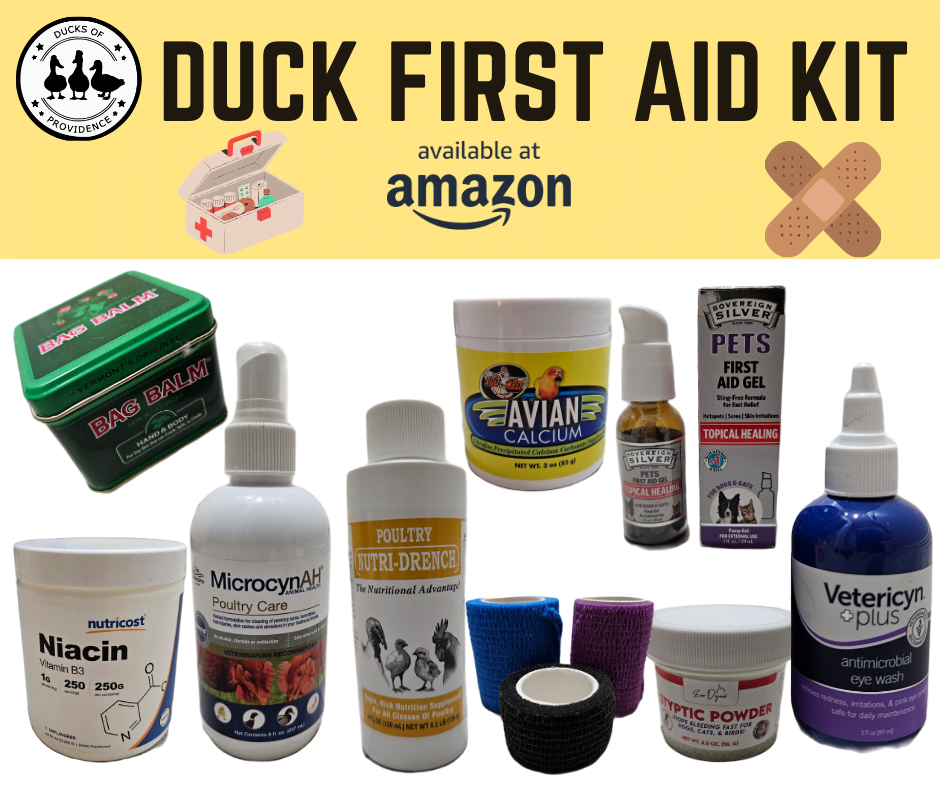
Duck First Aid Kit
Whether you’re a seasoned duck keeper or just starting your quacking journey, having reliable first aid supplies on hand is essential. Don’t wait until an emergency strikes—be prepared and proactive in safeguarding the health of your feathered companions.
How to Wrap Ducks’ Angel Wing
When a duck’s wing is afflicted with angel wing, tender care and thoughtful intervention can make a world of difference in their recovery journey. This chapter navigates the gentle art of wrapping a duck’s wing, offering practical guidance to support healing and comfort.
Three common methods are used to wrap angel wing in ducks:
- Vet Wrap Around Wing Only: This method involves wrapping VetWrap around the affected wing in a figure-eight pattern. The VetWrap helps to immobilize the wing and prevent further twisting. It’s important to wrap the wing snugly but not too tightly to avoid restricting blood flow or causing discomfort to the duck.
- Vet Wrap Around Wing and Body: In this approach, VetWrap is first wrapped around the affected wing in a figure-eight pattern as described above. Then, additional VetWrap is applied around the duck’s body to further secure the wing in place. This provides extra support and stability to the affected wing, reducing the chances of it becoming dislodged or shifting out of position.
- Elastic Bandage Around Duck’s Body: Instead of using VetWrap, an elastic bandage can be wrapped around the duck’s body to immobilize the affected wing. The bandage is wrapped snugly around the body, ensuring that the wing is held securely against the duck’s side. This method provides support to the wing while also restricting movement to aid in the healing process.
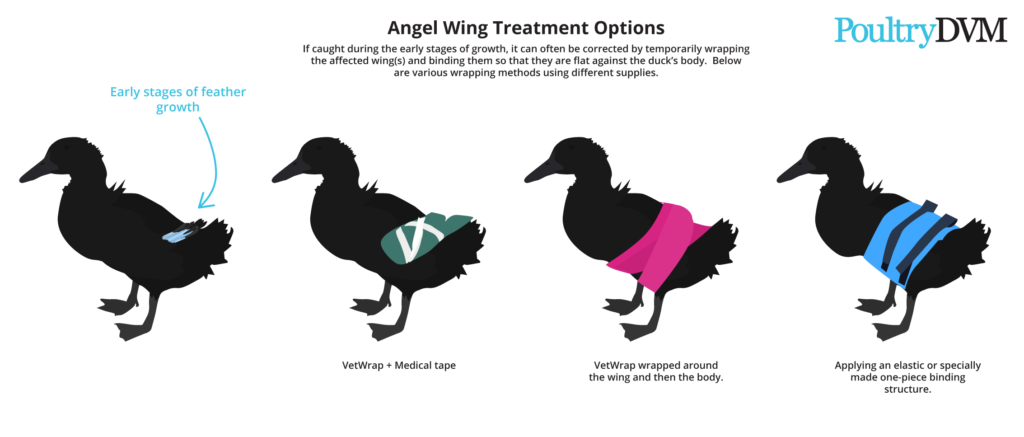
Each of these methods aims to immobilize the affected wing and provide support to help correct angel wing deformity. The choice of method may depend on the severity of the condition, the comfort level of the duck, and the preference of the caregiver or veterinarian. It’s essential to monitor the duck closely during the bandaging process and make adjustments as needed to ensure proper healing and comfort.
Here is a step-by-step guide for the wing-only wrapping:
- Gather Supplies: Collect all the necessary supplies, including VetWrap, scissors (to cut the VetWrap), and any additional padding or support materials if needed.
- Prepare the Duck: Gently hold the duck to keep it calm and still during the bandaging process. It may be helpful to have someone assist you in holding the duck securely.
- Assess the Wing: Carefully examine the affected wing to determine the extent of the deformity and identify the areas that need support. Ensure that there are no open wounds or injuries on the wing before proceeding.
- Apply Padding (Optional): If the wing is particularly sensitive or if there are pressure points that need extra protection, you can apply a thin layer of padding, such as cotton or gauze, to the affected area. This helps to provide cushioning and prevent irritation from the VetWrap.
- Begin Wrapping: Start wrapping the VetWrap around the affected wing in a figure-eight pattern. Begin at the base of the wing near the body and work your way outward towards the tip of the wing. Make sure to wrap the VetWrap snugly but not too tightly to avoid cutting off circulation.
- Secure the Wrap: Once you reach the tip of the wing, secure the end of the VetWrap in place by pressing it firmly against the wrapped portion or by tucking it underneath the previous layers.
- Check for Comfort and Mobility: After applying the VetWrap, gently move the duck’s wing to ensure that it can still move comfortably but is adequately supported. Make any necessary adjustments to the tightness of the wrap to ensure proper fit and comfort.
- Monitor Daily: Check the VetWrap bandage daily to ensure that it remains secure and in good condition. If the VetWrap becomes loose or damaged, replace it with a fresh wrap to maintain support for the wing.
- Continue Treatment as Needed: Depending on the severity of the angel wing deformity, continue to monitor the duck’s progress and make adjustments to the treatment as needed. If there are signs of improvement, gradually reduce the frequency of bandage changes as the wing heals.
- Consult a Veterinarian: If you have any concerns or if the angel wing does not improve with treatment, consult a veterinarian for further evaluation and guidance.

Pro Tip: Expect Initial Balance Challenges: After wrapping the wing, the duck may initially struggle to maintain balance due to the immobilized wing. However, rest assured that they will quickly adapt to their new equilibrium and resume their normal activities.
By following these steps with patience and care, caretakers can provide valuable support to ducks affected by angel wing, facilitating their recovery and well-being.
Related Posts You May Enjoy:
- 29 Must-have Items for Your Pet Duck First Aid Kit
- 15 Common Duck Health Conditions You Should Know About
- Essential Nutritional Needs of Ducks: A Complete Overview
References
[1] https://www.sciencedirect.com/science/article/pii/S0032579121004739?via%3Dihub
[2] https://duckdvm.com/condition/angel-wing
[3] By Cengland0 – Own work, CC BY 3.0 https://commons.wikimedia.org/wiki/File:Angelwing2.jpg
[4] By Cengland0 – Own work, CC BY 3.0, https://commons.wikimedia.org/w/index.php?curid=4936599
[5] By Tony Alter from Newport News, USA – I Like This DuckUploaded by theveravee, CC BY 2.0, https://commons.wikimedia.org/w/index.php?curid=26892581
[6] Serafin JA. The influence of diet composition upon growth and development of sandhill cranes. The Condor. 1982;84(4):427-434. https://www.jstor.org/stable/1367448

